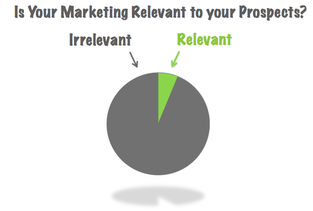https://www.linkedin.com/pulse/your-marketing-beat-droppingin-bad-way-try-musically-inspired-chris?trk=prof-post
Thanks!
-Chris
|
Check out my post on this topic on LinkedIn:
https://www.linkedin.com/pulse/your-marketing-beat-droppingin-bad-way-try-musically-inspired-chris?trk=prof-post Thanks! -Chris
0 Comments
Check out my post on this topic on LinkedIn:
https://www.linkedin.com/pulse/how-run-marketing-operations-team-chris-russell?trk=prof-post Thanks, Chris I love sales development reps. Why? A good sales development team can make an average marketing team look great. They also have the power to help an account executive obliterate their quota. Unfortunately, SDRs seem to be the perennial whipping boy of both sales and marketing. Not only is this unfair, but it’s also counterproductive to effective revenue generation. Marketers, here’s my guide to improving your relationship with your SDR team:
Maybe I am an SDR apologist, but I love those little guys and gals! Hopefully, you can use some of the ideas above to improve your relationship with your sales development team and make it easier for both parties to crush their numbers.  I believe in science, do you? I feel like you have ask that these days. The Freakonomics podcast episode “When Willpower Isn’t Enough” articulates the science behind two successful tactics that marketers have used for a long time, but IMO don't leverage enough. 1) Temptation Bundling – this is the idea that people will do things they don’t want to do, if its paired with a reward. For example, someone might only allow themselves to order dessert on days they exercised. Or someone might not allow themselves to watch the newest Game of Thrones episode unless they clean the house first. Makes sense, right? Temptation bundling is especially powerful in b2b marketing since jobs are work and most people don’t like to do work. Marketers frequently incent prospects with temptation bundling at tradeshows. Giving away USB chargers in exchange for a scan, or watch a demo and get entered in a chance to win an Ipad is temptation bundling. It is not as common in other b2b marketing channels, but it should be! At Marketo, we ran a successful and repeatable email campaign that was classic temptation bundling. First, we would segment our database to find prospects that were extremely qualified, but had not reached MQL status. Next, we would then send an email offering them a $100 Amazon gift card if they sat through a personalized sales demo. Not only did the campaign always have a great response rate, but it also was fantastic at generating new customers. Why? Temptation bundling pushed prospects to do a thing they knew they should do (evaluate marketing automation), but were not motivated to do right now, that is until we provided a personal incentive ( an Amazon gift card). Other ideas for b2b marketing campaigns which use temptation bundling:
2) Fresh Start Effect – why do people set New Years resolutions? Because of the “Fresh Start Effect”! People are more likely to turn “I should do this” into “I am doing this and I am starting today” on dates that begin a time period, i.e. the first day of the year, first day of the month, their birthdays, etc… Just like New Years resolutions, this effect wears off over time, but it can be a great b2b marketing tactic to use to get people to take a first step. Still, when it comes to creating a marketing calendar, most marketers are more focused on time of day, day of week, and monthly or quarterly quotas . Why not add a couple of fresh start effect campaigns in the mix? Dates that could be fresh starts effect opportunities for b2b marketers:
The easiest channel to harness the fresh start effect is email, since campaigns can be scheduled for specific days. But webinars, adwords, and any other digital marketing channel could just as easily be run to harness the fresh start effect or to use content that speaks to it. I love finding inspiration for creative campaigns IRL. And I bet you can find some interesting ways to add both of these tactics to your marketing calendar.  I am of the opinion that one of the most significant factors that contributed to the rise of the American empire was the United States’ relatively limited cultural baggage. Knocking down barriers to unification of purpose and effectiveness is a lot easier when your country’s cultural identity doesn’t bring with it thousands of years of bad blood, sectarian divisions, and poor government. This viewpoint, that culture is a key factor in determining success or failure, isn’t just relevant to geopolitics, but also to marketing automation. Unfortunately, many marketing automation customers have a culture of perceiving marketing and all of its parts as a cost rather than as a revenue driver. And organizations that see marketing as a cost of doing business, can manage it in one of only two ways: either arbitrarily or by continually working to lower the cost of marketing. When presented with the two options, the arbitrary method may seem better, but it’s really not. Who wants to work in a role where the value of that role isn’t tied to reality? Where budgets could swell or shrink on whims or perception? A better way, is to create a culture (both inside and outside marketing) of viewing marketing spend as a key driver of revenue growth. But just as a person suddenly standing up one day and telling the people around him to view him differently is unlikely to change how he is viewed (at least not in the way he intended), marketers need to change not just what they say, but also how they act. For example:
Many companies unfortunately still don’t do these things, but many of the successful ones do and they have a big impact on creating a culture of performance in marketing. If your company is one of the ones still working to make this cultural shift, don’t feel too bad. Look at this quote from Raghu Raghavan, CEO of Act-On Software, a company which offers a very popular and successful marketing automation platform. When being interviewed back in April about his plans for a recently secured $44m round of funding, Mr. Raghavan said... “...Act-On’s growth was only limited by ‘how much money I have to hire salespeople’...” What a strange statement by a marketing automation executive. Does marketing spend not also drive growth at Act-on? If not, how is marketing viewed at Act-On? Even for a company that primarily differentiates on the lower cost of it’s solution, that would be a peculiar reality considering the idea that marketing and marketing automation can drive growth and create ROI is presumably a key slide in their sales pitches. Given Mr. Raghavan’s impressive credentials and modern marketing chops, hopefully this quote is out of context. Either way, this quote must have had Act-On’s customers shaking their heads and the CRM sales rep that manages Act-On's account window shopping Ferraris. What would that CRM rep’s commission be on licenses for $44 million worth of sales people? Sadly, the way housing prices are right now here in San Francisco, probably still not enough to buy a house. :( Happy Marketing, Chris Author: Chris Russell  ***This week's post is not based on any knowledge gained during my previous employment at Marketo. Instead, I used an awesome data collection tool called import.io to harvest the information publically available on the Marketo blog for posts published from 2011-2014. I then sliced and diced in Excel and drew my own conclusions*** Wouldn't it be great to create a vibrant corporate blog capable of driving meaningful social engagement with your prospects? Marketo has done a fantastic job of this, so I decided to jump in and see what lessons can be learned from their success. 1. Marketo Hired Pros - Their Posts Did Best Turns out professional content marketers are pretty good at content marketing. At Marketo, team members whose job it was to think about content marketing all day had the highest average number of shares per post of any Marketo employees, over 42% higher than the next internal group of authors. 2. Posts by Junior Team Members Achieved 51% More Avg. Shares than Those Authored by Marketo Executives Finding the time to publish a new blog post every week can be a difficult, which is why many corporate blog managers begrudgingly allow the occasional post by a junior or off-message team member to slip through. Marketo takes a different policy though. Only ~50% of posts were published by FTE content marketers or executives. The other 50% came from team members across the company or from external thought leaders and partners. Perhaps the biggest gem in this analysis is that, at least at Marketo, the posts authored by junior team members had the highest number of average shares of any internal group! They were able to capture 51% more shares than posts by Marketo executives! Why? Well, it may be reasonable to assume that it is harder for a junior team member to get a post approved (they published less posts overall) so their posts might have to meet a higher standard to get published. But I also believe that under the right circumstances, the energy and creativity a junior team member can bring can often overcome a lack of depth of experience. 3. Of the Top 4 Author Types By Avg. Shares, 3 Were Partners or External Thought Leaders At Marketo, only 1% of posts came from external thought leaders, but posts by this group were the most shared on average. The success of posts by this groups probably isn't much of a surprise. Every company would like the best minds in the business to post on their blog, but this can be difficult to achieve due to cost and a lack of existing relationships. It should be reassuring then to see that Marketo seems to struggle with this as well, as is evidenced by the low number of overall posts by external thought leaders. 4. Posts by Partners Who Sell Products Achieved 36% More Reach than Those Authored by Partners who Sell Services Regardless of if a partner sells products or services, both groups drove higher than average shares: both made the top 4 list of average shares by author types. Partners and external thought leaders can be great blog contributors because their posts bring together two networks, yours and theirs. This can pull in more readers to your blog than you would be able to engage alone. It was interesting however to see that Marketo partners that sell products outperformed partners that sell services by 36%. Do product companies have more interesting things to say than services companies? 5. Infographic Blog Posts Captured 317% More Shares than Other Types of Posts My personal feelings about infographics aside, people love them. When it comes to sharing success, there were really only two types of posts by Marketo, blog posts that shared infographics and those that didn't get many shares. And when you look at the Marketo posts that went Viral, almost all were infographics. The only possible conclusion here is that if your company doesn't publish regular, rich, compelling infographics, you're doing social media marketing wrong. 6. Marketo Kept It Early Stage Below is a Wordle image which shows the categories in which Marketo published the most posts (the words which are the largest had the most posts categorized under them). This visualization makes it clear: Marketo executed a broad and bold blog strategy focused on early stage best practices and thought leadership. They published very few posts which they classified as "Product and Industry" focused, "Marketing Automation" focused, or even feature focused, such as "Lead Nurturing" or "Lead Scoring". In fact it will probably be difficult for you to find some of these categories below--thats how infrequently Marketo focused on mid to late stage content on their blog. 7. A Rising Tide Lifts All Ships and Blog Posts While Marketo's blog shares per post were gaining impressive momentum throughout the entire time studied, things really got crazy when Marketo announced they would IPO. Suddenly, Marketo's brand was all over the press and blogger-sphere. While I don't have access to Marketo's web traffic stats, I am willing to bet their blog shares and visitor numbers are congruent. Which is an important point: having a blog doesn't drive engagement with prospects. Your blog is exactly like any other type of content: it needs to be promoted and be easy to find organically. Marketo does a nice job of both, and reaped the benefits when they stepped into a bigger spotlight. Pretty interesting, huh? I would love to hear your thoughts in the comments below.
Author: Chris Russell  It’s been much discussed for the past several years and while the outcome in the end wasn’t necessarily surprising, what was surprising was that when the announcement was made, a huge opportunity was missed. I am of course talking about Microsoft corporation’s appointment of Satya Nadella as their CEO, but what was the huge opportunity missed? In today’s digital world, people turn to LinkedIn to learn about a person’s professional background and they turn to Twitter to learn what that person has to say. In both social media platforms (approximately a quarter billion and a billion users respectively), Mr. Nadella's profiles are embarrassingly weak and for a major technology company that critics claim has lost touch with modern users, this represents an unfortunate and huge missed opportunity to engage and impress. This is Mr. Nadella’s public LinkedIn profile (2 days following the announcement): It says CEO of Microsoft is his first gig (!) and he only has 384 professional connections. If potential customers, or worse: stockholders, were searching for reassurance that Microsoft’s technology portfolio and $300b market cap was in good hands with an experienced veteran who lives in our modern, socially driven world, they didn’t find it on LinkedIn. In addition to professional credentials, it’s logical to be interested in what Mr. Nadella has to say. Is he engaging, insightful, intelligent? Does he have a vision for the future? Unfortunately, Twitter, the most popular direct communication platform in the world, also gets the same treatment as LinkedIn from Mr. Nadella and his marketing team. His last tweet, @satyanadella, before the two since he has become CEO is three years old. And while Mr. Nadella deserves kudos for giving Twitter a second chance since his appointment, the paraphrased version of last and only two tweets since being named CEO are (and again I am paraphrasing) A) “I promise to tweet more, just not right now” and “Look, I live in Seattle and am on the Seattle Seahawks Bandwagon”. Even going back to 2010, there is an uncomfortable lean towards corporate schilling rather than intimacy. Great twitter accounts, such as @benioff or @richardbranson, are full of windows into their owner's character and vision, Mr. Nadella's tweets offer us only banalities. Still, none of this is irreparable. The beauty of social media is that it is about the moment, so Mr. Nadella and his marketing team have countless opportunities moving forward to take full advantage of these platforms and to better instill trust by showing the world that Mircosoft gets the modern technology user and has some of its best years ahead. Or...they could take the Larry Ellison (@larryellison) approach to social media: no LinkedIn profile (at least that I could find) and a Twitter account with 44,500 followers and exactly one tweet. One snarky, hyper competitive, sales thirsty tweet: Larry Ellison, like a boss. :)
Best, Chris Author: Chris Russell Inbound vs. Outbound Marketing: Which Model can drive Growth the Fastest for your B2B Company?2/5/2014  It can be difficult for B2B companies to know whether a traditional outbound marketing model (tradeshows, field marketing, sales prospecting, list purchases, cold mass emailing, etc...) or the more trendy inbound marketing model (SEO, SEM, social media, content marketing, etc…) will be more productive. Here is a quick quiz to help you ask the right questions about your business as well as suggested marketing plans based on your answers: Demand Generation Quiz: Which Model is right for your B2B Company 1. How big is your potential market? A) Every company in the world could buy from us B) More than ten thousand, but not unlimited C) We can name every potential customer 2. How expensive is your product? A) less than a couple of thousands B) Tens of thousands C) 7 figures plus 3. Do your potential customers know of you and know generally what you do? A) Mostly, yes B) ~10%-50% probably do C) Nope, we need to work on that 4. Are your potential customers actively looking for solutions like yours? A) Yes, the market is generally aware that companies provide solutions like ours B) Mixed C) No, we are creating a new market space 5. How many non-independently branded product families do you sell? (for example: Proctor & Gamble sells hundreds (thousands?) of products, but nearly all under a independently branded name brand. While Oracle also sells hundreds of products, but most are sold under the Oracle brand). A) <5 B) 5-10 C) >10 6. Is your primary offering consulting services? A) No B) We sell services, but as an add on C) Yes 7. How open minded are your potential customers to new ideas and technology? A) Very open minded and are actively seeking emerging ideas and technology B) Mixed C) Our potential customers are risk adverse and/or traditionalist 8. How long is your total marketing to sales cycle? A) Days B) Months C) Years _______________________________________________________________ Results: How Did You Answer? ***Mostly A’s - A marketing led, sales assisted/closed approach is best You have described a market in which a marketing driven, low touch, high velocity model will likely work best. Companies with attributes such as offering low cost, well known products to educated prospects who are actively seeking solutions, are well advised to focus resources on receiving and converting inbound interest, rather than less productive cold calling and outbound prospecting. Creating an impactful and engaging prospect web experience is also considerably easier when companies have shorter sales cycles and can focus inbound marketing messaging around less than five products or services, rather than dozens or hundreds. Recommended Channel Strategies For Your Market
***Mostly B’s or an Even Mix of A’s, B’s, and C’s - Your firm is likely to find success by incorporating a mixed strategy. Because your market is more multifaceted than some, your marketing approach will need to reflect that. A pure inbound model is no more likely to work than a pure outbound model. Due to your mixed portfolio of programs and channels, it will be especially important to find a common yardstick to measure program success to prevent spending valuable resources on an unproductive channel when others are performing well and could be ramped. Recommended Channel Strategies For Your Market
***Mostly C’s - A sales led, marketing assisted approach is needed You have described a market in which your prospective customers will need a lot of hand holding by sales, so while marketing programs can still play a big part, they will likely perform better if done in support of outbound sales prospecting or sales pipeline acceleration activities. This is due to the fact that potential customers who have characteristics such as being risk averse, are totally unaware of the value or existence of your solution, or are being asked to spend millions of dollars on your product or services require a guided, custom experience that pre-packaged marketing programs will struggle to provide without sales support. Also, companies who have extremely complex product SKU’s and numerous product families will struggle to provide one size fits all marketing messaging in many inbound channels, even with large marketing teams. Plus companies who can name all or nearly all of their prospective customers are usually able to target prospects in a more cost effective manner if they focus on targeted outbound marketing and sales prospecting campaigns. Recommended Channel Strategies For Your Market
While every B2B business is different, knowing the right questions to ask is important. Hopefully this quiz and potential marketing plans help you find success in your market! Best Wishes, Chris Author: Chris Russell Photo Credit: Michelle Johson - http://www.flickr.com/photos/26176646@N04  Hoping to start 2014 with a bang? Here are eleven resolutions to help you more amazing in your career.
Good luck and happy New Year!! -Chris Author: Chris Russell  Many companies focus their marketing time and money on specific verticals or job titles, but there is one commonality that the prospects of all but the most ubiquitous brands share, and it’s that the vast majority of your prospects will NOT consider purchasing your solution in the next year. Sounds depressing, right? But if you compare your potential market opportunity to the number of active buying cycles your sales team will engage in this year, it becomes pretty clear that of the majority of people in the world that you could sell to, most won’t be sold to in the next year. This isn’t a knock on your marketing or sales prospecting effectiveness, even if you improved these by 100%, chances are it would only increase your annual market penetration a couple of percent. So what is it that’s stopping all of these prospects from purchasing right now? Usually it’s factors largely out of your control such as your prospect’s budget, leadership, timing, and their other priorities. But what’s equally important to know is that all of these obstacles are usually temporary. Which is why it’s so important to segment your content and offers by buying stage. If the majority of your prospects are “no stage” buyers, blasting out late stage offers like the opportunity to speak with a salesperson or watch a 30 minute product demo will drum up as many unsubscribes as clicks. And once someone unsubscribes, literally or mentally, your ability to market to them down the road is severely restricted. So what’s a marketer to do in a world of “no-stage” buyers?
So take a long term, more strategic view the next time you are planning or executing your campaigns and consider the “no stage” buyer. ‘ Happy marketing! -Chris Author: Chris Russell |
AuthorChris RussellChris works with companies in all stages of growth, helping them marry their brand’s values and vision with proven demand creation and marketing strategy, programs, process, and technology. Archives
December 2022
Categories
All
|
|
By Chris Russell
Double Haul Strategies Denver, CO, USA © 2023 |
